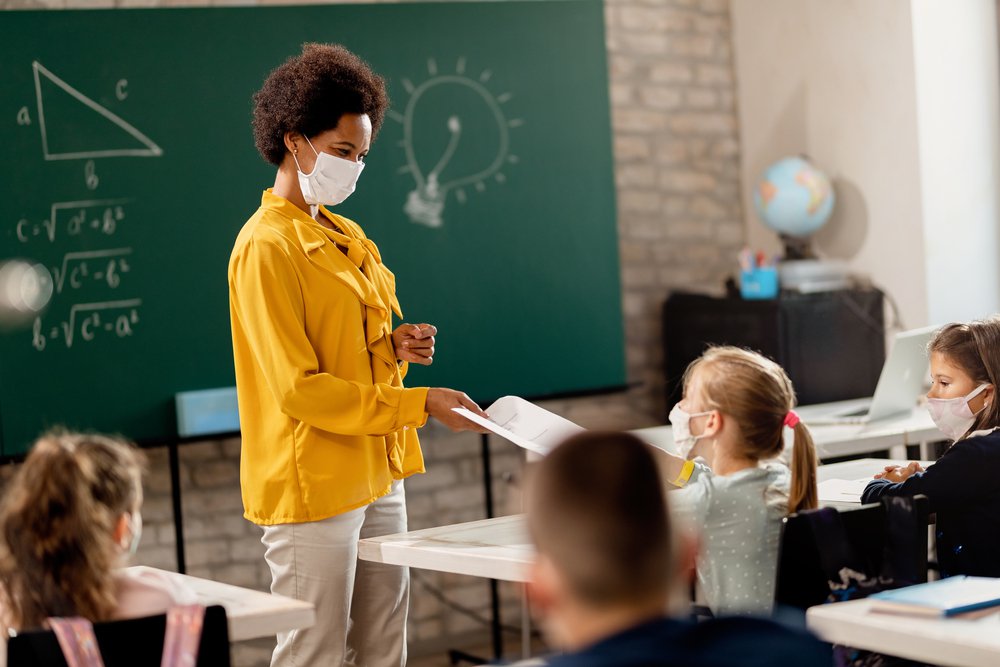 Everyone can agree that teaching is not a job for the faint of heart -- especially after School Year 2020. But workplace injury is rarely among the first trials we think of when we empathize with educators. The truth is, teachers are exposed to a number of hazards in a school environment, and work-related injuries are more common than you may realize.
Everyone can agree that teaching is not a job for the faint of heart -- especially after School Year 2020. But workplace injury is rarely among the first trials we think of when we empathize with educators. The truth is, teachers are exposed to a number of hazards in a school environment, and work-related injuries are more common than you may realize.
At Barrington Orthopedic Specialists, we proudly accept worker’s compensation for treating common injuries sustained during the tough job of being a teacher, and we’re passionate about educating all workers on the potential risks they face at the workplace. Here are three surprisingly common workplace injuries that teachers should watch out for as they head back to school:
1. Slips, Trips & Falls
If you’ve ever been to a school, you know that wet, slick floors are a normal part of a teacher’s workplace environment. Combined with narrow, crowded hallways and distracting students, these conditions are a recipe for slipping, tripping, and fall accidents. This is especially prevalent in kitchen areas that are frequently cleaned, such as the cafeteria and faculty room.
While slipping on the floor isn’t always the end of the world, these injuries can be significant and include painful conditions such as twisted ankles, twisted knees, pulled back muscles, neck strain, and serious injuries that can severely impact a teacher’s quality of life.
2. Repetitive Motion Injuries
Students may complain about class being the same old routine every day, but the same can go for the teachers leading it. Repetitive movements of the hands, wrists, and back -- typing, grading papers with a pen, drawing on dry-erase boards, etc -- can ultimately lead to injuries such as muscle strain and nerve compressions (like carpal tunnel syndrome). In serious cases, including some cases of carpal tunnel syndrome, surgery may even be required to alleviate pain and restore the affected muscles to their full function.
At Barrington Orthopedic Specialists, Dr. Matthew Bernstein and Dr. Mark Yaffe specialize in treating work-related injuries to the upper extremities. If you’re struggling with repetitive strain injuries, schedule an appointment before your condition progresses.
3. Crushing Injuries
Schools are meant to be a safe place to learn, and they should ideally be a safe place to work as well. Unfortunately, many schools are affected by unstable infrastructure, putting teachers at risk for being crushed when a doorframe or bleacher breaks and falls. Even schools that are perfectly sturdy struggle to manage slamming doors, moving carts, and other potential hazards that can lead to crushing injuries to the hands, toes, wrists, and more.
If you’re a teacher going back to school this fall, we thank you for all the amazing work you do, and we urge you to know your risks and stay as safe as possible. If you find yourself struggling with common work-related injuries and other life-threatening illnesses, in need of treatment, and unsure where to start with the complex process of workers’ compensation, reach out to the dedicated workers’ compensation program at Barrington Orthopedic Specialists. We’re happy to help!
If you are suffering from a work-related injury, don’t wait to seek treatment. The team at Barrington Orthopedic Specialists proudly accepts workers' compensation claims and is committed to your total recovery. Ready to get started? Request an appointment with us today.
Frequently Asked Questions
What can teachers do to prevent injury risks in the classroom?
Teachers can take certain precautions to minimize their risk of injury in the classroom. This includes using proper ergonomic techniques when performing tasks, taking regular breaks to stretch and rest, and reporting any unsafe conditions or hazards to school administrators.
How common are knee injuries among teachers?
Knee injuries may be more common than you think among educators. Due to the time spent standing and walking around in a school environment, teachers may be at risk for developing knee pain or injuries such as strains, sprains, or even fractures.
What should an injured teacher do?
If a teacher sustains an injury while on the job, they should report it immediately to their supervisor and seek medical attention. They may also want to consider filing a workers' compensation claim and consulting with an orthopedic specialist for proper treatment and recovery.
How can toxic exposure affect teachers?
Toxic exposure refers to the harmful effects of being exposed to hazardous substances in the workplace. In a school environment, this can include exposure to cleaning chemicals, mold, and other potentially harmful materials. Teachers may be at risk for developing respiratory issues or skin irritation from repeated exposure to these substances.
Are there any subject-related injuries that teachers should be aware of?
Yes, some subjects may pose a higher risk for injury than others. For example, art teachers may be at risk for repetitive strain injuries from the constant use of their hands and wrists while creating projects with students. Physical education teachers are also at a higher risk for muscle strains and other physical injuries during physical activities.
